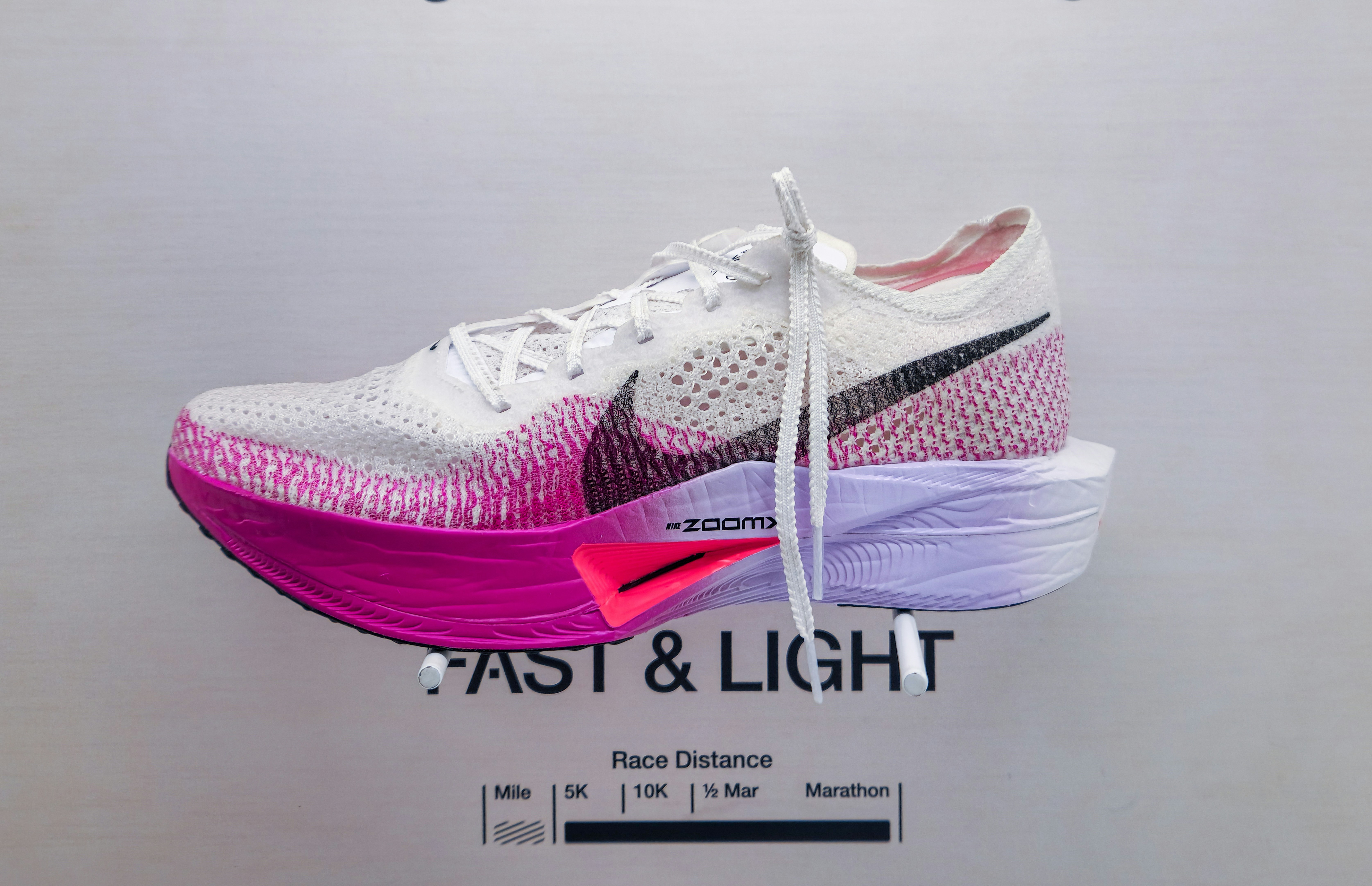Media release
From:
BMJ OPEN SPORTS & EXERCISE MEDICINE
Ditch ‘shrink it and pink it’ approach to women’s running shoes, manufacturers urged
Women’s foot anatomy, biomechanics, life stages completely different from men’s
Female-based designs might boost women’s comfort, injury prevention, and performance
Sports footwear manufacturers need to ditch the ‘shrink it and pink it’ approach to women’s running shoes, because this is failing to differentiate their distinct anatomical and biomechanical needs across the life course from those of men, concludes a small qualitative study published in the open access journal BMJ Open Sports & Exercise Medicine.
Female-, rather than male-based, designs might not only boost women runners’ comfort, but also enhance injury prevention, and their performance, say the researchers.
Over the past 50 years, manufacturers have invested billions of dollars on developing running shoes that can prevent injury, maximise comfort, and improve runners’ performance.
Yet both industry and academic research to inform these advances has predominantly been designed for, and tested on, men and boys, point out the researchers.
Running shoes are designed by creating a three-dimensional foot-shaped mould called a ‘last, which is typically based on male foot anatomy, they explain.
Most brands use the same last for their entire range, and beyond making the shoes smaller and changing the colour—a process known as ‘shrink it and pink it’—often only minimal modifications are made to create women’s shoes, they add.
The researchers therefore wanted to hear from recreational and competitive women runners which features they prioritise in a running shoe and how these might differ across the lifespan, with a view to informing future shoe design.
They recruited 21 study participants via posters displayed at local running stores in Vancouver, Canada, with the aim of including a broad range of ages, running experience, and weekly running volume and frequency.
Eleven of the women were recreational runners who clocked up a weekly average of 30 km; and 10 were competitive runners, who averaged 45 km. Nine of the women ran during pregnancy or soon after giving birth. Their ages ranged from 20 to 70, and their years of running experience ranged from 6 to 58.
The women were asked to rank in order of importance the factors informing their choice of running shoes. The responses showed that their primary considerations were the comfort and feel of the shoe, injury prevention, and performance.
In terms of comfort, most of them said they wanted a wider toe box, a narrower heel, and more cushioning; competitive runners also wanted shoes incorporating performance enhancing features, such as a carbon plate, as long as these didn’t compromise comfort.
The women said that they actively sought out running shoes that they believed would help prevent running injuries, and with this in mind, both groups emphasised the high value they placed on buying shoes from trusted retailers or personnel.
They highlighted the need for different shoe designs or components to align with different running contexts—taking part in races, training, speed work, or running with an injury, for example.
And those who were mothers, reported needing a larger shoe size and wider fit as well as more support and cushioning during pregnancy and after giving birth. Competitive runners also said they needed added cushioning and support features in their footwear as they got older.
This study involved only a small number of participants, and the researchers acknowledge that participants came from a specific geographical area, which may limit the generalisability of the findings.
Nevertheless, they suggest: “Overall, our findings highlight a critical gap in the design of running footwear, which has been traditionally based on male anatomy and biomechanics.
“While participants did not always report an inability to find footwear, their narratives reflected a process of trial-and-error adaptation, often without guidance or purpose-built solutions. This suggests that their needs are not proactively addressed through current footwear design or communication.”
And they conclude: “We strongly recommend that the footwear industry should move beyond simply scaling down men’s shoes to fit women’s feet. Instead, there is a need for sex- and gender- specific designs that accommodate the distinct foot morphology of women and their social constructs and preferences, all of which evolve across the lifespan.”
Notes for editors
Research: “If a shoe had been designed from a woman’s foot, would I be running without getting the injuries?”: running footwear needs and preferences of recreational and competitive women runners across the lifespan Doi: 10.1136/ bmjsem-2025-002597
Journal: BMJ Open Sports & Exercise Medicine
External funding: Hettas Sport Ltd; Natural Sciences & Engineering Research Council of Canada



 International
International



